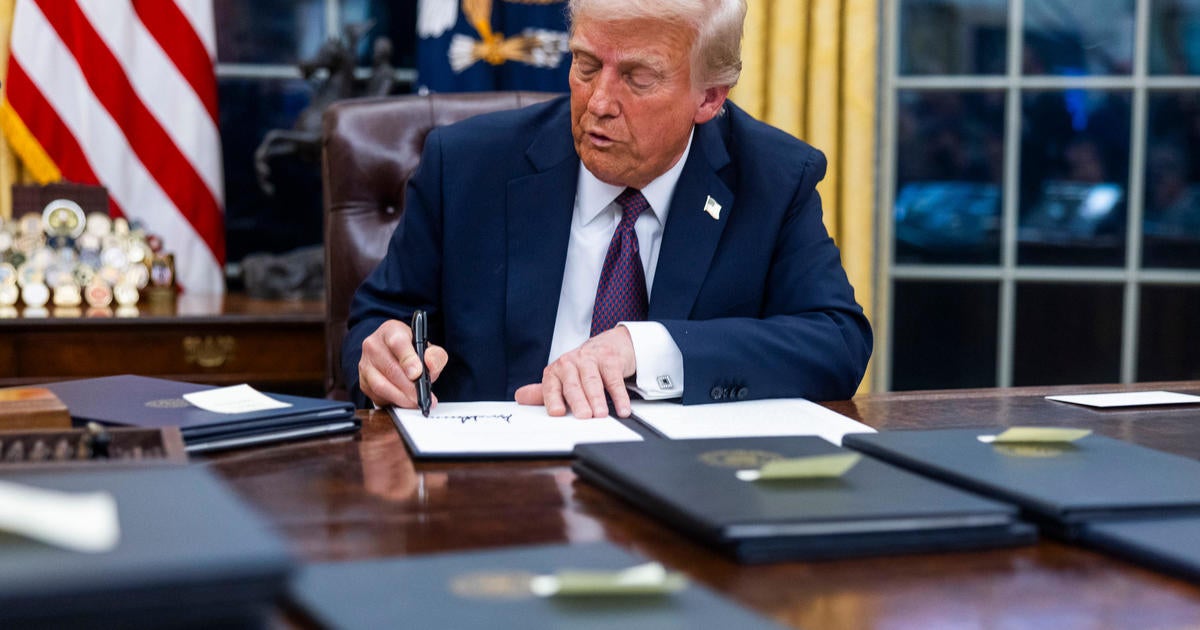President Trump, who while campaigning vowed to end the “inflation nightmare,” on Monday signaled his focus on the high cost of living in the U.S. by signing an executive order that requires “all executive departments and agencies to deliver emergency price relief” to Americans.
Mr. Trump’s Jan. 20 order blames several factors for the pandemic-era inflation surge that has left many households feeling financially pinched, including high federal spending under the Biden administration and costs from new regulations.
It is critical to restore purchasing power to the American family and improve our quality of life,” the executive order states.
To accomplish that, Mr. Trump is ordering the departments and agencies that fall under the executive branch, including the departments of Commerce, Health and Human Services, Labor, and Energy, to take actions that lower prices for everything from housing and health costs to food and fuel.
There’s a lot riding on Mr. Trump’s mandate given that U.S. voters last fall consistently ranked the economy and inflation as among their top issues. But whether Mr. Trump’s order will meaningfully move the needle on inflation is uncertain, some economists say.
“Trump’s cost of living order fails to address the root causes of inflation, namely corporate profiteering and broken supply chains,” said Lindsay Owens, executive director of the Groundwork Collaborative, a progressive economic think tank. “This order is a talking point, not a plan.”
Recent economic research from the likes of Ben Bernanke, the former Federal Reserve chairman, has found that spiking prices in 2021 and 2022 stemmed from factors such as supply-chain disruptions and increased commodity prices — forces that any president, including Mr. Trump, would struggle to control.
The Trump administration didn’t immediately return a request for comment.
In the meantime, inflation has cooled dramatically since reaching a 40-year high in June 2022, although the consumer price index remains stubbornly above the Federal Reserve’s goal of a 2% annual rate. While prices are rising more slowly, more than 4 in 10 Americans express pessimism about their own economic prospects over the next year due to the ongoing impact of inflation, Bankrate found in a December survey.
Mr. Trump’s plan: Deregulation, cheaper housing and more
Mr. Trump’s order targeting prices highlights several areas for federal departments to focus on, including reducing the number of federal regulations that Trump administration officials argue has driven up the cost of living for American families.
“In sum, unprecedented regulatory oppression from the Biden administration is estimated to have imposed almost $50,000 in costs on the average American household,” the order states.
That refers to an analysis from University of Chicago economist Casey Mulligan, whose research found that the Biden administration’s regulations may over time add a total of about $47,000 in added costs per household. Fuel emission rules from the Obama and Biden administrations are also forecast to boost the cost of vehicles by $6,000 each, Mulligan estimated.
But eliminating federal regulations that protect workers and consumers won’t lower the cost of living, Owens said. Americans have been struggling with cost-of-living issues for decades, ranging from soaring health care costs to rising housing prices — trends rooted in structural problems such as a shortage of available housing and the nation’s complex for-profit health care system.
To be sure, Mr. Trump nodded to some of those issues in his order, requiring federal departments to “lower the cost of housing and expand housing supply” and “eliminate unnecessary administrative expenses and rent-seeking practices that increase health care costs.”
While those are ambitious goals, tackling housing costs is notoriously difficult given that new construction is often constrained by state and local laws, from zoning restrictions to environmental regulations — issues over which the federal government is unlikely to have much leverage.
Lowering medical costs could help American households, which spend more on health care than any other developed nation. Yet Mr. Trump also signed an executive order on Jan. 20 that revokes a Biden administration effort to lower prescription costs, which is seemingly at odds with his cost-of-living directive.
Separately, Mr. Trump also signed a separate executive order on Jan. 20 declaring a national energy emergency, part of his administration’s plan to ramp up domestic energy production and lower costs.
“The inflation crisis was caused by massive overspending and escalating energy prices,” Trump said on Monday. “And that is why today I will also declare a national energy emergency. We will drill, baby, drill.”
Mr. Trump is likely to have some convincing to do that he has a recipe for lowering prices. In a recent poll by CBS News, roughly 40% of people said they expected grocery prices to drop under the Trump administration, while 37% thought costs would rise.
Another survey, from The Associated Press-NORC Center for Public Affairs Research, revealed less confidence on the direction of prices: 2 in 10 Americans said they are “extremely” or “very” confident that Mr. Trump will be able to make progress on lowering the cost of groceries, housing or health care this year.
In an interview with Time Magazine, which named him 2024 Person of the Year, Mr. Trump acknowledged that bringing down food costs will be a difficult challenge.
“I’d like to bring them down. It’s hard to bring things down once they’re up. You know, it’s very hard. But I think that they will,” he said.

